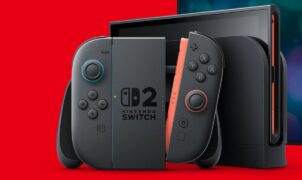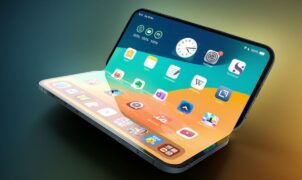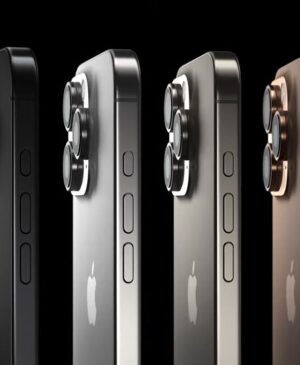TECH REVIEW – The Google Pixel 9 falls prey to some familiar shortcomings, such as relatively lackluster performance, but it shines in several critical areas, most notably in battery life. The camera quality remains impressive — even if the Pixel 9’s output doesn’t always match up to its more premium rivals. With Google’s promise of seven years of software support, this phone could easily remain in your pocket for many years to come.
The Google Pixel 9 might easily be overshadowed by its Pro-tier siblings. After all, there are three different Pixel 9 Pro models, and given the extra hardware and features they offer, the standard Pixel 9 can appear underwhelming. However, beneath that dual-camera shell, it’s clear that Google has put in a lot of effort into improving the Pixel 9 in ways users have been requesting for years.
There are plenty of reasons to be disappointed with the Pixel 9. The high price, which has increased for the second year in a row, is as painful as a swarm of wasp stings. The fact that the Pixel 9 comes with Android 14 makes one wonder why Google chose to release the phone two months earlier than expected.
But having tested the Pixel 9 myself, it’s clear that Google is offering a substantial number of upgrades this year. Bigger and better versions of key hardware components, plus the usual slew of software upgrades that help set the Pixel line apart from other Android phones. But is it worth upgrading to, or adding to our list of the best phones? My Google Pixel 9 review breaks it all down to help you make that decision.
Familiar Design
The Pixel 9 hasn’t undergone a major redesign compared to the Pixel 8, but there are refined touches that are noticeable if you know where to look. The most prominent change is the redesigned camera bar, which now features a new oval-shaped camera bump instead of the edge-to-edge camera bar seen on the past three generations of Pixels.
This redesign doesn’t stop the camera bar from being quite large, though. It’s exactly the same size as the bump on the Pixel 9 Pro, which needed extra space to hold a third camera lens. The bump also seems to protrude more than in previous years, so if the Pixel’s massive camera bar has bothered you in the past, the Pixel 9 isn’t likely to change your mind.
The rounded edges of the Pixel 8 have been flattened this year, giving it a look that’s reminiscent of Apple’s iPhones. The polished metal edges of my Obsidian Pixel 9 also blend seamlessly into the rest of the phone’s color scheme, making it appear sleeker and more stylish while still feeling comfortable in my hand.
Google has also promised that the bezels have been reduced by 15%. While I can see some reduction in the bezel size, they’re still thicker than I’d like and noticeably larger than those on phones like the iPhone 15 Pro. Similarly, the glossy glass back returns for another year, though it would have been nice to see Google swap out the fingerprint magnet for the matte textured glass found on the Pixel 9 Pro. Thankfully, all the glass has been upgraded to Gorilla Glass Victus 2, which should offer better protection against scratches and other damage.
There’s no denying that the Pixel 9 is larger and heavier than the Pixel 8. The new phone measures 153 x 72 x 8.4 mm and weighs 198 grams, compared to the Pixel 8’s 150.5 x 70.9 x 8.9 mm dimensions and 187-gram weight. It’s not a major change, but the Pixel 9 feels heftier in the hand. It’s not overly cumbersome, but it could be a dealbreaker for some.
Still, the larger 6.3-inch display strikes the perfect balance between large and small phone sizes. As someone who prefers bigger screens, I never found myself struggling with the available real estate, which is more than I can say for the 6.1-inch Pixel 8a.
Is It a Pretty Screen?
The Pixel 9’s larger display offers a 2424 x 1080 resolution at 422 pixels per inch in a 20:9 aspect ratio. That’s quite similar to the Pixel 8, accounting for the extra tenth of an inch in screen space. Like last year, the Pixel 9 also features a “Smooth Display” setting that offers an adaptive refresh rate from 60Hz to 120Hz.
The big change this year is the addition of the improved Actua display, which Google claims can reach 1,800 nits of HDR brightness and 2,700 nits of peak brightness. This range is closer to the Pixel 8 Pro than the standard Pixel 8. In our lab tests, we didn’t quite hit those numbers, but we did record 1,769 nits of brightness at 100% HDR. The highest brightness we measured was 2,390 nits at 40% HDR, with adaptive brightness and a flashlight.
So while the Pixel 9 falls slightly short of its theoretical maximum, we did see a significant improvement compared to the Pixel 8. The new phone is considerably brighter than the 1,416 nits of HDR brightness we measured on the Samsung Galaxy S24 and the 1,318 nits on the iPhone 15.
Unfortunately, things take a bit of a downturn from there. The Pixel 9’s sRGB score is 119.4% in adaptive mode and 106.6% in natural mode, which means it doesn’t reproduce colors as well as its rivals, including the Pixel 8 (126.7% and 108.3%). The Pixel 9’s adaptive mode exceeds the iPhone 15’s 114.4% sRGB score, which is something, but it falls behind the Samsung Galaxy S24’s scores of 137.5% in Vivid mode and 120.8% in natural mode.
The same is true for the DCI-P3 color gamut, with the Pixel 9’s display scoring 84.5% in adaptive mode and 75.5% in natural mode. That’s higher than the iPhone 15’s 81.1% result but falls short of both the Pixel 8 (89.7% / 76.7%) and the Samsung Galaxy S24 (97.4% / 85.5%).
The Delta-E rating also didn’t fare well for the Pixel 9, with a score of 0.3 in adaptive mode and 0.2 in natural mode. Since lower numbers are better, this means it lags behind the other three displays. The Pixel 8 scored 0.26 in adaptive and 0.15 in natural, while the Galaxy S24 was rated at 0.22 in Vivid mode and 0.24 in natural. Meanwhile, the iPhone 15 beat them all with a score of 0.18.
Overall, this dip in display specs is relatively minor, but it’s disappointing to see the Pixel 9 taking a step back in color reproduction instead of forward. Sure, it may have outshone the iPhone 15 in several areas, but with the iPhone 16 fast approaching, it’s not really something to boast about. However, we can all appreciate the extra brightness on the screen, so at least that’s a positive.
Pixel AI
One of the most interesting features on the Pixel 9 is the “Add Me” camera mode, which blends AR prompts with generative AI to add a photographer to an existing photo. The feature mostly works as advertised: the photographer takes a photo, hands the camera to another person, who then guides them to the right spot and takes a second photo. The Pixel 9 merges the two images and presents all three as a collection in Google Photos.
It’s a simple process and takes about a minute to complete, but it isn’t without potential issues. For example, the camera struggles to identify non-human subjects. It completely failed with some Lego minifigures, which isn’t surprising, but also failed to recognize my dog in the original photo.
So I ended up where my dog was sitting, only for him to vanish from the final shot. However, considering this selective blindness, “Add Me” could still become a useful tool in a photographer’s arsenal.
Google Keep, one of the company’s most underrated features, gets an AI upgrade on the Pixel 9 with “Magic Lists.” Instead of creating lists from scratch, Google Keep generates a list based on a prompt — giving you the option to keep it as-is or edit it as you wish.
Magic Lists feels like quite a handy tool, and Google’s AI understood my prompts with zero issues. Better still, the lists actually seemed useful, and I could have left them as they were if I wanted to. Whether it was a to-do list for cleaning my house, a packing list for a vacation, or ideas on what to take on an international flight, Keep Magic Lists created something I would have spent several minutes working on in just a few seconds.
Pixel Studio and Pixel Screenshots
Native image generation comes to the Pixel 9 with the Pixel Studio app, an Imagen 3-powered tool that creates images based on custom prompts. You then have the option to rate the generated images, try again, or change the art style to something more suitable. It’s all fairly standard stuff for a basic AI image generator.
And “basic” is the keyword because this is a fairly standard image creation tool with all the pros and cons that come with it. Sometimes images come out a bit funky, like a Labrador playing guitar with what can only be its back leg. Text is also unreadable, and of course, you can’t use the app to create images of real people. Copyrighted works are okay, though, as evidenced by my movie poster featuring R2-D2 starring alongside the Andy Android mascot.
Pixel Studio also works as an image editor, letting you create stickers from your existing photos, add captions, and even erase parts — much like Magic Eraser. And yes, these tools are also usable with the images you generate in Pixel Studio.
Personally, I don’t see much point in Pixel Screenshots as a standalone app. The idea is that it helps organize all your screenshots and makes it easier to find them when you need them. Why this wasn’t integrated into Google Photos isn’t clear, but at least the app does a reasonable job.
Pixel Screenshots is far from perfect, at least based on my modest selection of screens. So, I guess the effectiveness depends entirely on how many screenshots you have and what kind of information they contain. Maybe the AI can’t quite decipher Reddit comment threads yet.
Gemini Assistant
Gemini can finally replace Google Assistant, a process that happens automatically when you activate Gemini during setup — or later in the settings menu. You can switch back to Assistant anytime in the Gemini app if you miss the AI-free assistance.
Gemini Assistant has some advantages, as it takes advantage of new multimodality — a fancy way of saying you can interact using more than just your voice and “Hey Google” commands. This includes typing queries and sharing images to assist with inquiries.
Switching to AI certainly has its perks. Contextual conversations mean that Gemini will be aware of your past conversations and can tailor its answers accordingly. I had a long conversation with the chatbot about finding flights from London to Tokyo, and it generally kept up with the topic throughout.
It wasn’t always perfect, and I know that some of the information wasn’t entirely accurate, but it was more than Google Assistant has ever managed on its own. However, in other cases, asking for directions and then following up with a query on what time it would be when I got there seemed to confuse Gemini, resulting in it opening up the timer app.
Unfortunately, the free version of Gemini is a little slow to load answers, and the Pixel 9 doesn’t come with free access to Gemini Advanced and Gemini Live like the Pixel 9 Pro models.
Other AI Features
Google has also promised a number of other AI-powered features that I wasn’t able to get working on the Pixel 9 during my testing. These include new AI-powered weather summaries, Auto Frame to reframe and expand existing photos, and Reimagine — which lets you change the background of your photos based on written prompts.
However, these features were up and running on the Pro models, so be sure to check out our Pixel 9 Pro review and Pixel 9 Pro XL review for a more in-depth look at how these features work on both phones.
Google Pixel 9 Review: Cameras
Google left the main and selfie camera lenses alone on the Pixel 9, but swapped out the 12MP ultra-wide-angle lens for a larger 48MP sensor — with a slightly wider aperture. There’s also the new Tensor G4 chipset, which uses AI and machine learning to enhance photo quality after the shutter is pressed.
But if the Pixel 9 wants a spot on the list of the best camera phones, it’s going to need to do more than just beat the Pixel 8 in a camera shootout. That’s why we put it head-to-head with one of Apple’s best — the iPhone 15 Pro.
With the main camera lens, it’s clear that the colors on the Pixel 9 are a bit muted compared to the iPhone 15 Pro, though the image itself looks brighter and less washed out. The iPhone 15 Pro also offers better overall quality, with the Pixel 9 starting to look noticeably more pixelated the further you zoom in. Overall, it’s not a bad photo, but the little things help give Apple the edge in outdoor shots.
Heading indoors and looking at this Lego statue of Grogu, the Pixel 9 has once again produced a brighter image. On the other hand, the iPhone 15 Pro is more true-to-life and manages to tone down the reflectiveness of the bricks despite the overall image being a bit darker. Zooming in, it feels like the Pixel managed to capture more detail this time around, even going so far as to pick up individual specs of dust that the iPhone blurred into the background.
It’s a similar situation with the ultra-wide shot, with the Pixel producing a brighter shot, whereas the iPhone 15 Pro turns out a more realistic-looking picture. However, the quality on the Pixel is noticeably better, and it’s clear the camera is putting its upgraded 48MP ultra-wide lens to good use, capturing a lot of the smaller details.
I certainly prefer the picture quality on the Pixel 9’s selfie camera since it really captures that resting death glare I inherited from my father. There’s not much going for the iPhone 15 Pro in this shot, with the Pixel producing better colors and no overexposure. The iPhone does pick out smaller details, like hairs and pores, just as well as the Pixel, but that’s about all it manages to achieve.
It’s no surprise that the iPhone 15 Pro excels at zoomed-in photos, though. While the Pixel does a commendable job with its digital-only zoom, the detail just isn’t there like it is in the iPhone shot.
The Porsche logo on the sign is a lot crisper on the iPhone, which also managed to pick out individual letters on the car behind. The Pixel did a good job trying to pick out the leaves on the background trees, while the iPhone 15 Pro just mashes them together, but that isn’t enough to save it.
The same is true for this second zoom shot at 8x magnification, the furthest the Pixel 9 can handle in the camera app. The Pixel 9 does a solid job of trying to pick out the details, including all the grime on the cell tower itself, but the iPhone 15 Pro Max’s hardware picks out much more detail and produces a clearer shot as a result.
Both phones did a stellar job with their portrait modes, easily picking out my dog as the subject and blurring everything around him. The bokeh effect is nice and pronounced, and both phones picked up an impressive amount of detail. That said, only the Pixel 9 seemed to notice that my dog’s whiskers did not need blurring at the edges, and that little extra detail helped cinch the lead.
Both phones perform well in low-light conditions, aided by their respective night photography modes. The iPhone 15 Pro certainly produced a brighter image, picking up a lot more from the nearby streetlights, while the Pixel manages to keep the colors a little more true to life. Those leaves aren’t that shiny in the real world, especially at night. But with both phones managing to capture a comparable level of detail, it’s a straight-up draw at night.
Performance
The Google Pixel series has never been known for particularly strong performance, but Google claims things have improved with the Pixel 9 series and the new Tensor G4. Supposedly, this phone offers 20% faster web browsing, 17% faster app launching, and improvements in power efficiency and better optimization for running AI models.
AI performance is the big focus for the Pixel 9, with Google claiming that the upgraded 12GB of RAM on the Pixel 9 has dedicated memory for AI features and should help the phone excel in AI tasks. That’s all well and good, but it doesn’t tell us how the phone will perform in other areas or how it stacks up against rival flagship phones. Unfortunately, it seems Google is spending another year behind the competition.
Google Pixel 9 Benchmark Test Results
It’s no surprise to hear that the Pixel 9 is not a performance powerhouse, with benchmark scores falling flat compared to the likes of the Samsung Galaxy S24 and the iPhone 15. Tensor chipsets have never come close to Qualcomm and Apple’s best chips, and it looks like that trend is continuing again this year.
In the Geekbench 6 test, which measures general performance, the Pixel 9 scored 1,758 on a single core test and 4,594 in the multicore test. That’s a noticeable improvement over the Pixel 8’s Tensor G3, which scored 1,569 and 3,744 in the same single and multicore tests. However, the Samsung Galaxy S24’s Snapdragon 8 Gen 3 came out of the testing chamber with 2,235 and 6,922, while the iPhone 15 scored 2,518 and 6,179. Needless to say, there’s a very large gap between Google’s latest and what Samsung and Apple have had on the market for several months.
It’s a very similar story in the graphics department, with the Tensor G4 chip scoring 55.71 frames per second in the Wild Life Unlimited graphics test. That’s barely above the Pixel 8’s 54 fps and significantly less than the iPhone 15’s 72.1 fps. Meanwhile, the Galaxy S24 outpaces them all with 120.4 frames per second.
So while Google may like to talk up the Tensor G4’s security and AI prowess, it’s clear there are much better phones if you want to indulge in mobile gaming and other processor-heavy activities.
Playing PUBG Mobile on the highest performance settings wasn’t a bad experience, though. The phone did start to get warm rather quickly, especially once I cranked up the graphics, but for the most part, the game seemed to run smoothly and without issue. No doubt more specialized gaming phones would handle everything much better and without the risk of needing an oven mitt to play.
Expecting best-in-class performance from a Google phone is a bit like expecting a cat not to chase a bird. You know things aren’t going to go as expected, and there’s no point in thinking otherwise. But I can’t help but wonder what it would take for Google to boost its numbers a bit more. Benchmark tests can’t cover everything, but it feels like Google is falling further and further behind — and we’re getting to the point where its best isn’t good enough.
Battery Life and Charging
While the Tensor G4 hasn’t made much headway in benchmark tests compared to the Tensor G3, it seems Google wasn’t exaggerating when it said there had been big improvements in the chip’s efficiency. That’s easily apparent in how much longer the battery lasted during our testing.
Each phone we review goes through Tom’s Guide’s proprietary battery test, which sees a fully-charged device surf the web over a cellular network until the battery runs out. Last year, the Pixel 8 managed to last 9 hours and 43 minutes, which is pretty poor compared to rival flagships, if not unsurprising for a Pixel phone. However, the Pixel 9 blows that result away, with 13 hours and 18 minutes with the Smooth Display adaptive refresh rate switched on.
Not only is that result almost 4 hours longer than the Pixel 8, but this score puts the Pixel 9 ahead of the iPhone 15’s battery test performance and only 10 minutes behind the Samsung Galaxy S24.
The larger battery will have played some part in the Pixel 9 lasting longer, but there’s only so much time you can squeeze out of 125 mAh of stored power. That means whatever improvements Google has made to the Tensor G4 are likely responsible for this. Considering battery life is often the Pixel series’ weakest feature, it’s really refreshing to see things changing for the better. Let’s just hope Google can keep it up in future generations.
Google hasn’t made any changes to the charging speed on the Pixel 9 compared to last year. Given the larger battery, it’s no big surprise that the phone appears to charge slightly more slowly — hitting 54% after 30 minutes compared to the Pixel 8’s 60%. That said, the Pixel 9’s recharge rate is on par with the Galaxy S24’s 54% and slightly above the iPhone 15’s 53%.
Software and Support
The Pixel 9 has some good news and bad news in the software department. The good news is that Google is once again offering 7 years of software support — covering full Android updates and security patches. This means that the phone should still receive updates until August 2031.
The downside is that the phone won’t be launching with Android 15; instead, it’s arriving with the latest version of Android 14. That’s a disappointing decision, especially since Google is releasing the Pixel 9 two months earlier than we initially expected. But at least the phones should be among the first to receive updates once Android 15 comes out of beta and releases to the public.
It’s unclear what this means for the phone’s final Android update when 2031 rolls around. Since new Pixels usually arrive after the next Android update has been released, they get one final update to the software before being cast aside by Google. Whether that will happen to the Pixel 9 series isn’t clear right now.
Caught in the Same Traps
The Google Pixel 9 falls into some of the same traps as its predecessors, especially in terms of the Tensor G4’s raw performance and the fact that prices have risen for the second consecutive year. The fact that the phone is being released with Android 14 certainly doesn’t help matters, though most buyers may not really notice the difference between now and the launch of Android 15.
At the same time, the Pixel 9 manages to offer a host of additional upgrades, the most important of which is battery life. It may not be enough to make it onto our best phone battery life list, but Google has made a massive leap forward, and that should be commended. The fact that the camera can also go head-to-head with the iPhone 15 Pro, one of the best camera phones, just shows where Google’s strengths and priorities lie. Even if the only hardware change is the 48MP ultra-wide-angle lens.
If you have a Google Pixel 8, the Pixel 9 probably isn’t worth the money unless you want to spend $800 on a battery life boost. For anyone with a Pixel 7 or older, picking up the Pixel 9 is a no-brainer. You get a brighter display, a big boost to available RAM, 7 years of full software updates, and the extra AI capabilities of the Tensor G4. Not to mention the improvements to the camera and battery life.
Assuming, of course, that you can stomach the fact that a Pixel phone now costs as much as an iPhone 15.
-Gergely Herpai “BadSector”-
Pros:
+ New, brighter display
+ Updated ultra-wide camera
+ Significantly better battery life and increased RAM
Cons:
– Second year of price increase in a row
– Released with Android 14
– Poor benchmark results
Google Pixel 9
Design - 8.2
Hardware - 7.8
Software - 8.5
Camera - 9.2
Value for Money - 7.1
8.2
EXCELLENT
The Google Pixel 9 offers substantial improvements, particularly in battery life, but it continues to struggle with some familiar drawbacks, such as high prices and performance shortcomings. However, the updates have brought several new features that deserve recognition.















Leave a Reply